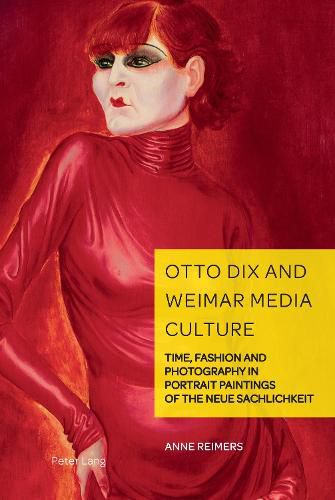Readings Newsletter
Become a Readings Member to make your shopping experience even easier.
Sign in or sign up for free!
You’re not far away from qualifying for FREE standard shipping within Australia
You’ve qualified for FREE standard shipping within Australia
The cart is loading…






This title is printed to order. This book may have been self-published. If so, we cannot guarantee the quality of the content. In the main most books will have gone through the editing process however some may not. We therefore suggest that you be aware of this before ordering this book. If in doubt check either the author or publisher’s details as we are unable to accept any returns unless they are faulty. Please contact us if you have any questions.
Otto Dix (1891-1969) was a leading figure of the Neue Sachlichkeit movement in painting in 1920s Germany. This groundbreaking study analyses for the first time in depth the relationship between Dix’s verist-realist portrait paintings and the rapidly expanding mass media culture of the Weimar era.
Focusing on a selection of portraits created in the first half of the 1920s, the book explores four specific aspects: the way in which Dix engaged with fashion and celebrity culture; how he responded to the challenge posed by photography; how he dealt with a situation where black-and-white reproductions were the most common medium through which diverse audiences encountered his work, and the ways in which Dix’s career development ran in parallel with the commentary on his artistic production in journalistic and specialist media publications. Temporality, medium-specificity and reproduction are identified as concerns that drove his aesthetic responses to a historically specific environment.
New archival material, letters and interviews by the artist, and a wide range of publications by art critics, cultural theorists and art historians of the Weimar era are drawn on to reveal new information about key paintings such as Self-Portrait with Nude Model (1923) and Portrait of the Dancer Anita Berber (1925).
$9.00 standard shipping within Australia
FREE standard shipping within Australia for orders over $100.00
Express & International shipping calculated at checkout
This title is printed to order. This book may have been self-published. If so, we cannot guarantee the quality of the content. In the main most books will have gone through the editing process however some may not. We therefore suggest that you be aware of this before ordering this book. If in doubt check either the author or publisher’s details as we are unable to accept any returns unless they are faulty. Please contact us if you have any questions.
Otto Dix (1891-1969) was a leading figure of the Neue Sachlichkeit movement in painting in 1920s Germany. This groundbreaking study analyses for the first time in depth the relationship between Dix’s verist-realist portrait paintings and the rapidly expanding mass media culture of the Weimar era.
Focusing on a selection of portraits created in the first half of the 1920s, the book explores four specific aspects: the way in which Dix engaged with fashion and celebrity culture; how he responded to the challenge posed by photography; how he dealt with a situation where black-and-white reproductions were the most common medium through which diverse audiences encountered his work, and the ways in which Dix’s career development ran in parallel with the commentary on his artistic production in journalistic and specialist media publications. Temporality, medium-specificity and reproduction are identified as concerns that drove his aesthetic responses to a historically specific environment.
New archival material, letters and interviews by the artist, and a wide range of publications by art critics, cultural theorists and art historians of the Weimar era are drawn on to reveal new information about key paintings such as Self-Portrait with Nude Model (1923) and Portrait of the Dancer Anita Berber (1925).